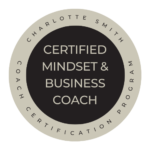


Agribusiness Leadership provides the necessary tools to unveil the fundamental principles of
Empowered Leaders that Trust themselves and the relationships they lead and leaders who are curious to discover who they are and who they lead.

As small business leaders, we want to make people proud—owners, clients, mentors, even our teams. The pull to please is strong. We react, we lose sight of why we lead in the first place.
I’ve felt that drift in my own life. When I’m honest, it happens most when my “why” isn’t visible. I tend to create scenarios in my head that don’t make sense and then I have limiting beliefs. Take for instance this blog, when I first wrote out the outline I didn’t believe in it because I didn’t have sight of my why. Over the week I found my why. So here it is, to empower people through my leadership journey. So I made a simple change and used my why to give you the tools that I have adopted and so I keep my why where I can see it every day—on my lock screen, and at the top of my journal. That reminder interrupts my reactions and brings me back to purpose.
If you’ve been leading for approval instead of on purpose, here are three reflections to help you believe your why again—and lead with more clarity and steadiness.
A clear why is owned, not borrowed. If your why is shaped mainly by fear, comparison, or someone else’s expectations, it won’t hold under pressure.
Try this:
Signs your why isn’t fully yours:
A stronger alternative:
“I lead to build a business that teaches people through our work what trust looks like—consistently, profitably, and with care.”
A good why is durable, but not static. Seasons change. Teams change. Markets change. Your why may need a tune-up—not because you failed, but because you grew.
Run a quick diagnostic:
If it needs a change, update it with constraints:
Example shift:
Belief grows with aligned action. You don’t need a grand gesture; you need proof. Create small wins that reinforce who you are and what you’re building.
Five practical moves you can make today:
Create a simple 3×5 card and keep it with you.
Front:
Back:
Use the same card for a week. Then review and update. This small ritual builds trust in your own word.
When your why is clear and present, you lead slower and stronger. Decisions steady. Communication sharpens. Your team begins to trust not just your intentions, but your patterns. That’s how small teams grow durable influence—without fear or control.
If you’d like help sharpening your why—or aligning your team around it—I offer 1:1 leadership mentoring and strategic planning for small business owners and team leads. Schedule a short call.
The Gap and the Gain – Dan Sullivan and Benjimine Hardy
The Preaseure Free CEO – Elle Ingalls
Your Authentic Voice -Arlen Motz Leadership
—
Arlen Motz Leadership helps leaders stop relying on fear and control and start building clarity, trust, and sustainable influence. Learn more and read client stories at arlenmotz.com.